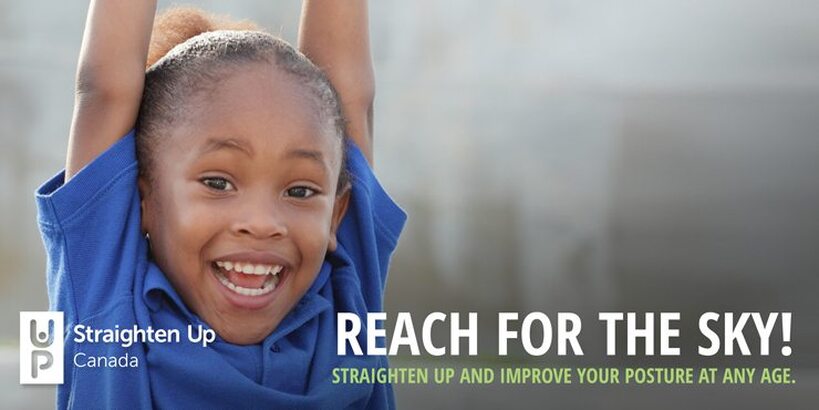 How many hours a day do you spend sitting? Reading, using computers, driving, watching TV —all that sitting adds up, especially if you have poor posture. Did you know that lower back pain and other musculoskeletal (MSK) conditions account for one third of missed work in Canada? It’s time to Straighten Up Canada and improve your spinal health!Canada’s chiropractors have developed an app for that. Straighten Up Canada is a FREE, easy-to-perform posture program that you can use in just three minutes a day. It’s the only free Canadian app specifically designed and completely dedicated to improving posture and spinal health. The Straighten Up Canada program can be practised almost anywhere and is a great warm up, cool down, stand-alone routine or ergonomic break. Good posture will help you to:
Watch the Straighten Up Canada exercise videos online For Adult | For Youth The development of this app has been supported by the CCA and all provincial associations.  Participating in sports is a great way to stay active and in some sports, a level of physical contact is required. However, this physical contact can sometimes result in injury. Although we hope that you are able to play safely, concussions are a common traumatic brain injury that can occur in high-contact sports. This injury can be serious, and it’s important to know what steps you should take in the event that you suspect that you or someone you know has suffered a concussion. Here are five things you should know about concussions:
If at any point you believe someone may have a concussion, contact medical staff immediately to assess the situation. Concussions should never be taken as a light injury and must be attended to. For more information on athlete-related concussions, take a look at our blog post on Returning to Sports after a Concussion. References
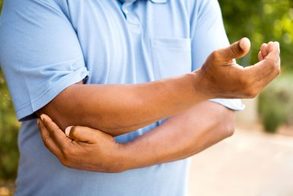 Now that it’s summer, many people are deep into their favourite sports and recreational activities. A common result of recreational sports is repetitive strain or injury due to overuse. Two of the most popular injuries that occur are tennis elbow and golfer’s elbow. Even if you don’t play tennis or golf, these injuries can easily happen to you over time. Tennis elbow and golfer’s elbow are different types of injuries that both involve forearm muscles, but impact where the muscles connect to the joint on opposite sides of the elbow. They both relate to inflammation and damage in the elbow and involve the wearing down of different tendons and the slowing of their ability to repair themselves. What are the differences between the two? Tennis Elbow
Common Stretches
Canadian Chiropractic Association The Greens First® Revolution Greens First® is the delicious, fast and easy way for the entire family to enjoy the phytonutrient and antioxidant benefits of a diet rich in dark greens and brightly colored fruits and vegetables in one, easy-to-use product. Join the Greens First Revolution to maximize your health and overall well-being!* Greens First® contains Certified Organic fruits, vegetables and barley grass which are first juiced, then spray dried at low temperatures, leaving all the important nutrients and live enzymes intact. Greens First is a complete phytonutrient and antioxidant supplement that works synergistically in your body providing 49 different super foods, extracts and concentrates including super-greens, organic fruits & vegetables, probiotics, soluble and insoluble fibers, herbs, spices, natural flavonoids and digestive enzymes. With today's busy lifestyles and fast food diets, you can't always get the recommended 7-13 servings of fruits and vegetables every day. Plus, reports indicate that the nutritional quality of food has dropped considerably in the past 10-20 years as soils are depleted and lacking in essential minerals, vitamins and trace nutrients. Many foods are processed and in a box that robs them of more of their remaining nutritional value. And foods that are cooked lose still more nutrients. That's where Greens First can help! Greens First is the best tasting and Non-GMO complete phytonutrient and antioxidant supplement that works synergistically in your body so you can be sure you are getting phytonutrients, antioxidants, and more that your body needs every day!* It's good to eat your fruits and vegetables, but drinking them is even better! When you stir Greens First powder into pure, cold water, it's not only delicious, refreshing and energizing, you are helping yourself to maintain a highly alkaline body, which is essential for optimum health and well-being.* Greens First is highly concentrated nutrition and is rich in electrons which means it is a powerful neutralizer of harmful acids.* (You can see that when you use the plastic scoop to get a serving out of the bottle - the negatively charged Greens First powder will cling to the positively charged plastic bottle the way that opposites do.) Greens First provides naturally occurring and easily absorbed vitamins, minerals and macronutrients. Another important nutrient that Greens First delivers is chlorophyll, which is the substance that helps plants absorb light and make them look green. The molecular structure of chlorophyll is very similar to that of hemoglobin which is the substance of your red blood cells that helps them transport oxygen. Chlorophyll helps your blood deliver oxygen throughout the body which in turn helps to make stronger body cells and stronger blood.* The Centers for Disease Control and Prevention reported in 2014 that American adults and children alike are simply not eating their fruits and vegetables. The study, titled Healthy People 2010, found that efforts to get the public to eat the recommended daily allowance of at least 2 servings of fruit and at least 3 of vegetables fell flat. Over all, not a single state hit the target numbers. In the meantime, Americans are experiencing epidemic rates of overweight and obesity and chronic diseases are on the rise. On June 2, 2011, the federal government released the new food icon, MyPlate, with suggestions for a healthy diet. USDA now suggests that 50% of your plate be fruits and vegetables at every meal.*** Greens First is the convenient and delicious way to get the antioxidants and phytonutrients you need everyday! Research shows that antioxidants have been associated with lower cancer and heart disease mortality rates, according to the USDA Agricultural Research Service. Kansas State University research suggests that eating plenty of foods high in antioxidants helps slow the processes associated with aging and protect against many chronic diseases.* *These statements have not been evaluated by the Food & Drug Administration.
**These products are not intended to diagnose, treat, cure or prevent any disease We have been undergoing renovation this summer and are pleased to announce the addition of new offices and a wheelchair accessible back access to the building. Not only have we added space, but we have added two new practitioners to our clinic! We would like to welcome Mackenzie Gregson (Registered Massage Therapist) and Margie Hartley (Family and Addictions Counsellor) to our clinic. 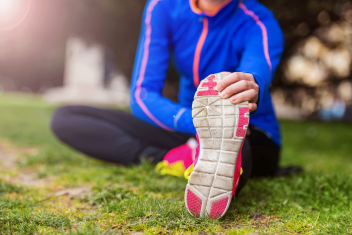 Take advantage of the Summer weather by taking your workout outside and going for a run. Running is a great way to get fit and have fun. Among many other benefits, running improves: The health of your heart and lungs Your energy and stress levels The tone and strength of your leg and hip muscles Your bone density (reduces the risk of osteoporosis) Stretches are an essential part of your running routine to avoid injuries. There are some important points to keep in mind to safely stretch your muscles after a run: Never stretch a cold muscle Hold each stretch for a slow count of 30 Repeat twice on each side Don’t overstretch—be comfortable Don’t bounce when stretching If you suffer an injury or experience pain that lasts longer than your usual post-workout soreness, ice the area to reduce swelling and inflammation, and consult a chiropractor. Here are five recommended stretches you can do after every run to target the major muscle groups: 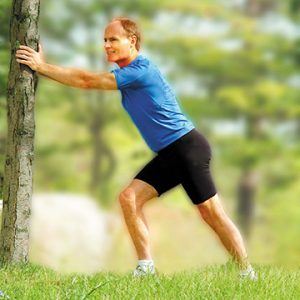 Upper calf Stretch your arms in front of you and place both hands on a sturdy object. Stand with feet comfortably apart with toes pointing towards the wall. Put one leg back about 12 inches from the other, keeping the knee straight and your foot flat on the ground. Bend the knee of the front leg so your hips move forward and lean into your hands. You should feel this stretch along the back of the leg below the knee. 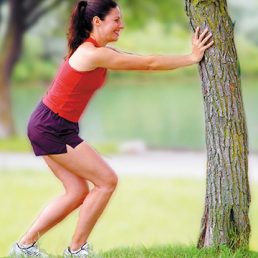 Lower calf Adopt the same position as for the upper calf stretch. Shift the foot of your back leg forward until the toes are just behind the heel of the front leg. Keep both heels on the ground with toes pointing forward. Lower your hips by bending both knees. You should feel this stretch through the back of the ankle. 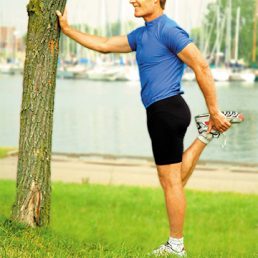 Back of thigh Place one foot up on a low surface about knee high with your hands on the thigh. Keep the knee of this leg straight with the toes pointing forward. Bend forward from the hips—not the waist. Keep your lower back flat by bringing your chest towards your knee rather than your head. You should feel this stretch along the back of the front leg above the knee. 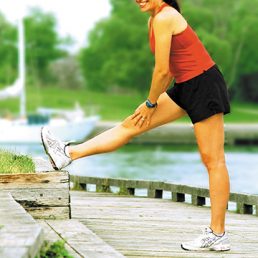 Hips/Buttocks From the back thigh stretch position, bend your front knee so that foot is now on the edge of the surface. Hands on hips, lean slightly forward over the bent leg. Keep the leg you are standing on straight. You should feel this stretch in the back of the hips and buttocks. 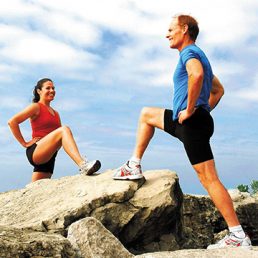 Front of thigh Stand near a wall, bench or a post and put one hand on it for balance. Grasp your ankle or foot with the other hand. Keep your upper body straight and pull your heel up towards your buttock. The knee of the leg you are bending should point towards the ground. If you are able to touch your buttock with the heel of the foot, gently extend the hip by moving the knee backwards. You should feel this stretch through the front of the leg above the knee.
 Author: CCA Summer weather is here! This means there are more opportunities to go outdoors and have fun. One activity that many of us look forward to in the summer months is camping. The fresh air, a well-lit campfire and a dip in the lake are difficult to resist. But preparing for camping is just as important as enjoying it. Be ready for the unexpected. Camp grounds and parks allow us to enjoy a large variety of recreational activities, which is what makes it a summer favorite. Preparing and organizing packing ahead of time can help you manage the unexpected and tackle challenges as they arise. We want to help out all our campers this summer with some useful tips to follow before you load up the tent and strap your canoe on the roof of the car1:
Author : Canadian Chiropractic Association  As the seasons start to turn, we sometimes forget things from the year before. In winter, we may underestimate the preparation needed to tackle the snow and ice. We might forget our mittens, we might forget the proper footwear for damp and slushy streets, or we might forget our posture when it comes to maintaining our sidewalk or driveway. Snow and ice create a hazardous situation for everyone. Shovelling and using salt, sand, or other ice-melting substances (like kitty litter) help to reduce the potential for slip and fall accidents.1 Apart from dressing properly for the weather and making sure you have a sturdy, lightweight shovel, there are a few practices you can follow to help make snow-shovelling safer1,2:
Happy shovelling! Author : Canadian Chiropractic Association |
|
Proudly powered by Weebly

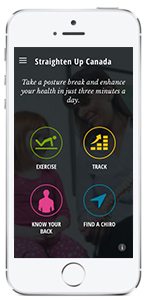
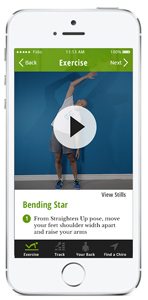
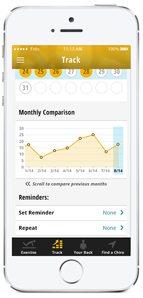



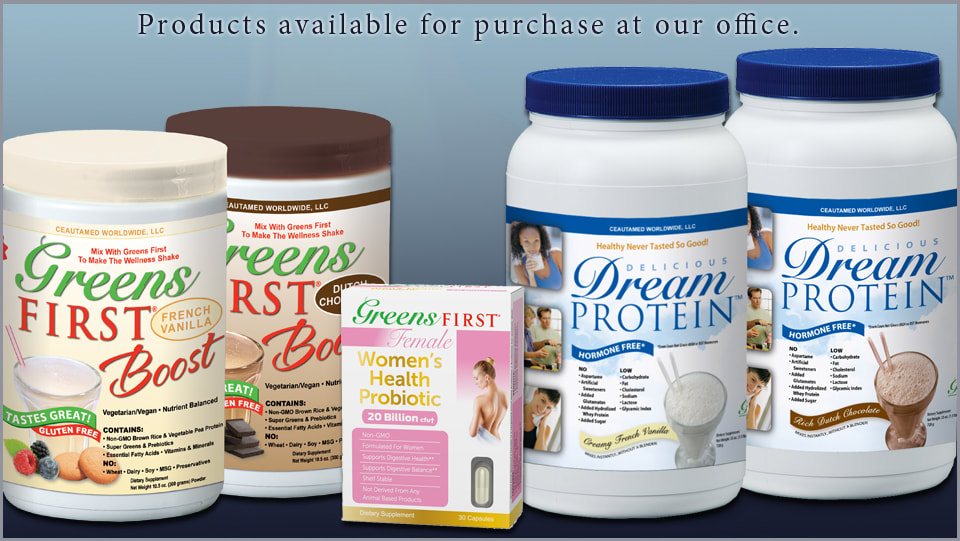

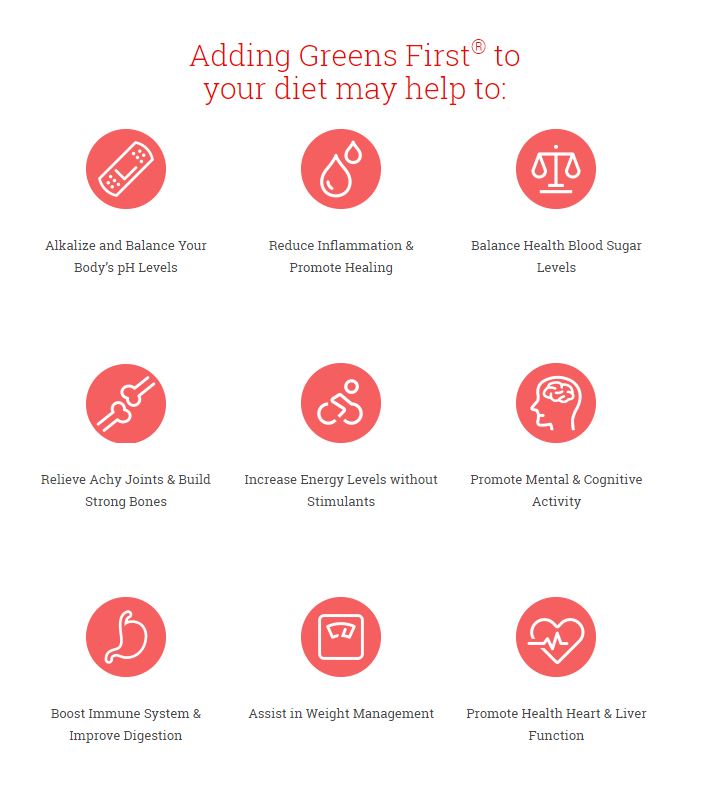
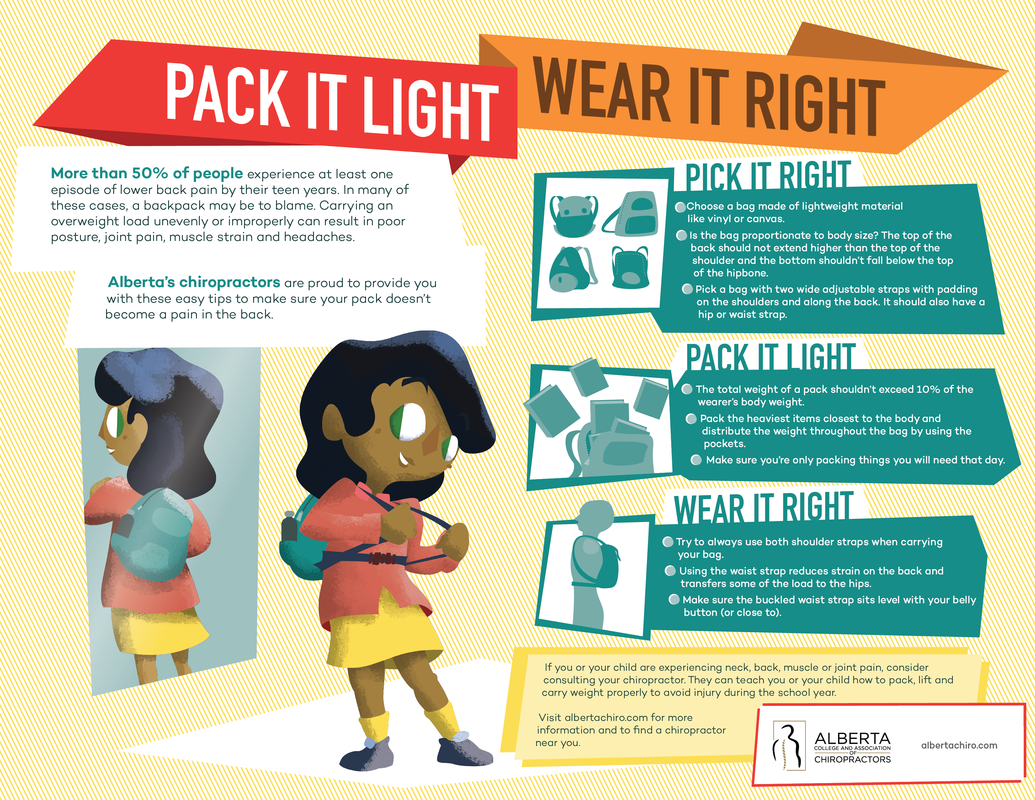
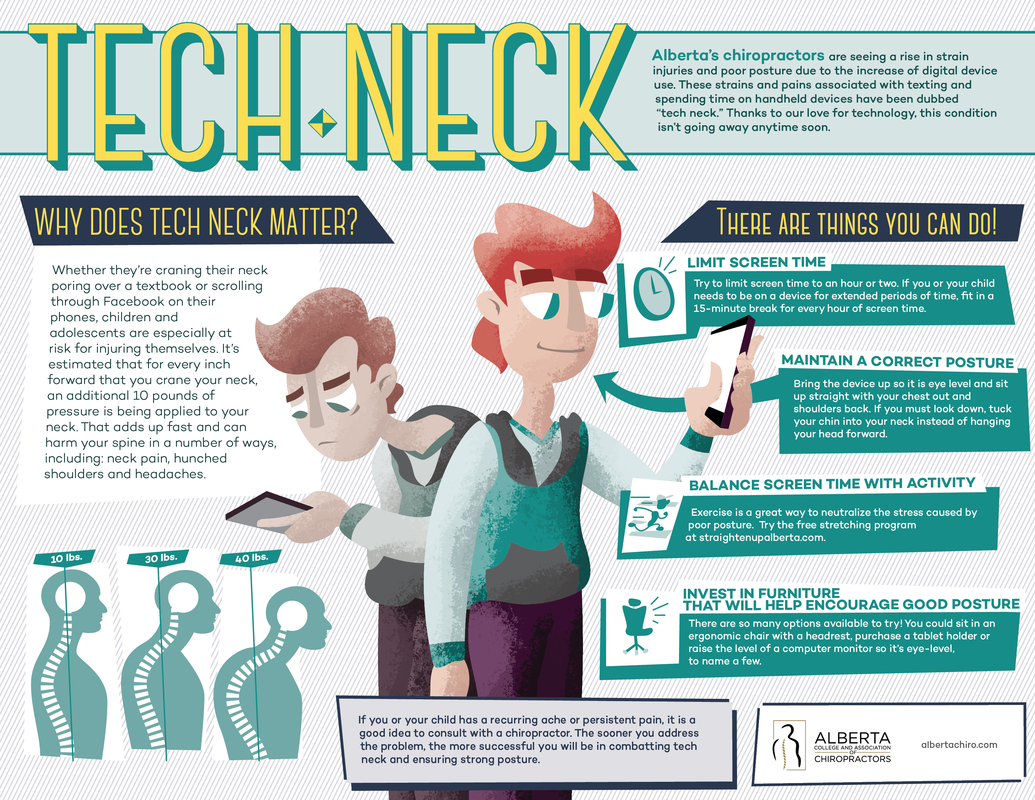



 RSS Feed
RSS Feed